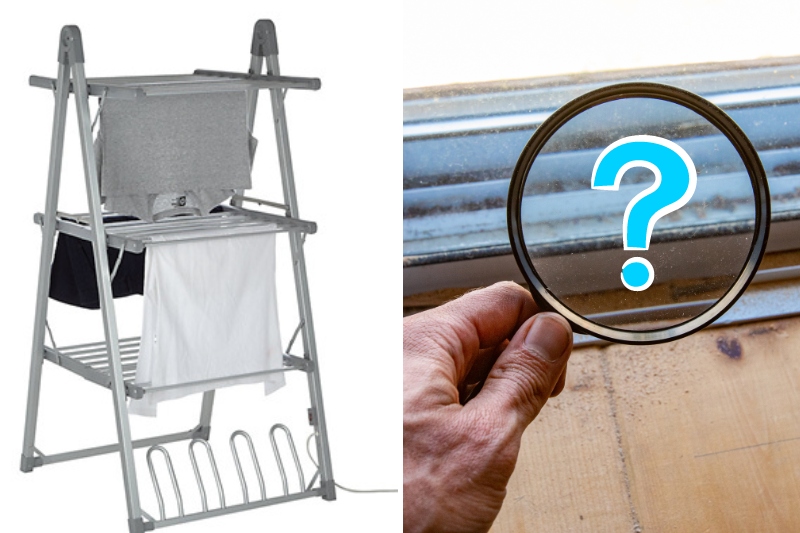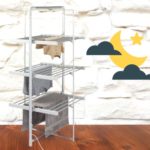Heated airers have become incredibly popular over the past few years because they offer a convenient and cost-effective alternative to traditional drying methods like drying laundry on a washing line or in a tumble dryer.
Heated airers are relatively easy to come by, are reasonably priced, and don’t cost too much to run.
Nevertheless, there is one major concern when it comes to heated airers and that is, will the airer cause dampness in a home?
The answer is: If you plan on using a heated airer in your home, you do run the risk of having damp problems as moisture will be released when you’re drying wet laundry on the airer.
You can, of course, limit potential problems by making sure that very little moisture can get into the air in your home.
Some ways to prevent your heated airer causing damp include the following:
- Use it in a well-ventilated space.
- Open a window if it’s warm enough to do so.
- Use a dehumidifier to remove moisture from the air.
- Wring out your clothes or spin them in the washing machine a second time before hanging them on the airer.
- Put the airer in a room with an extractor fan, and turn the extractor fan on.
Let’s take a look at heated airers and their connection to dampness in more detail.
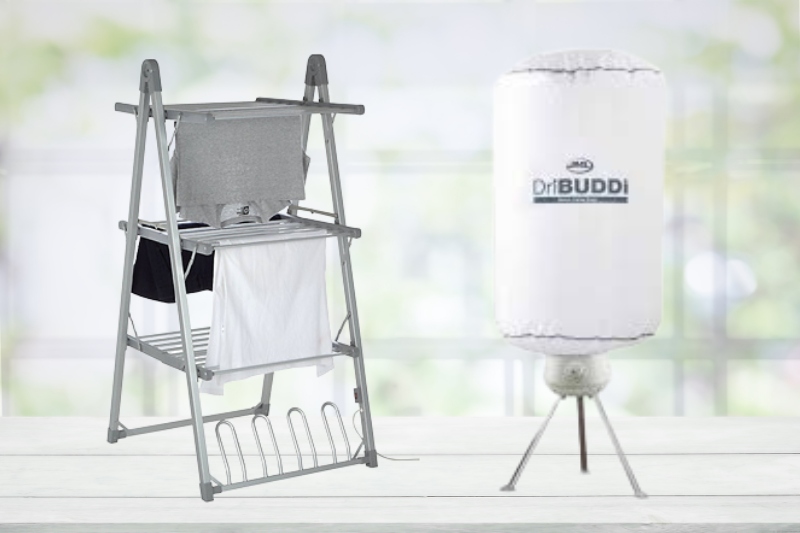
Will a Heated Airer Cause Damp in a Home?
A heated airer can potentially cause damp. The device itself doesn’t give off moisture, but the wet laundry you put on it will.
As clothes dry on a heated airer, they release a lot of moisture into the air. This increases the humidity level in the room.
If the drying room isn’t sufficiently ventilated, you’ll see lots of condensation forming on cold surfaces in the area, for example, on the windows, walls, ceiling and door.
It is this condensation, or the water droplets that you see, that can lead to damp-related problems, and even fungal growth.
If your home already suffers from high humidity and condensation, it’s likely that using a heated airer will only aggravate these problems, and this especially true if you don’t use/care for the airer correctly.
This could bring about a damp problem, or make a pre-existing damp issue worse and more obvious to you.
Do Heated Airers Cause Condensation?
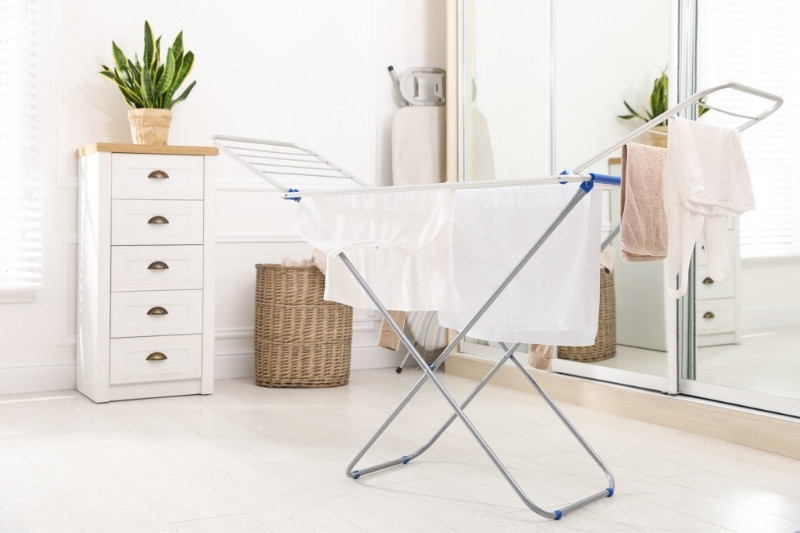
If you dry any kind of wet laundry inside your home it can give rise to condensation.
If you use a heated airer to dry your clothes, a lot of moisture will be released into the air thus increasing the humidity levels.
In turn, you may see condensation forming on the cold surfaces in your property.
However, condensation-related issues can be mitigated by doing the following:
- Put your electric airer in a well-ventilated room.
- Make sure there is sufficient air-flow in the area (open a window).
- Use a dehumidifier to collect unwanted moisture from the air.
If you put these good practices into use each time you use your electric airer, you will be able to limit how much condensation forms in your home.
How to Stop a Heated Airer Causing Damp and Condensation
1. Ventilation
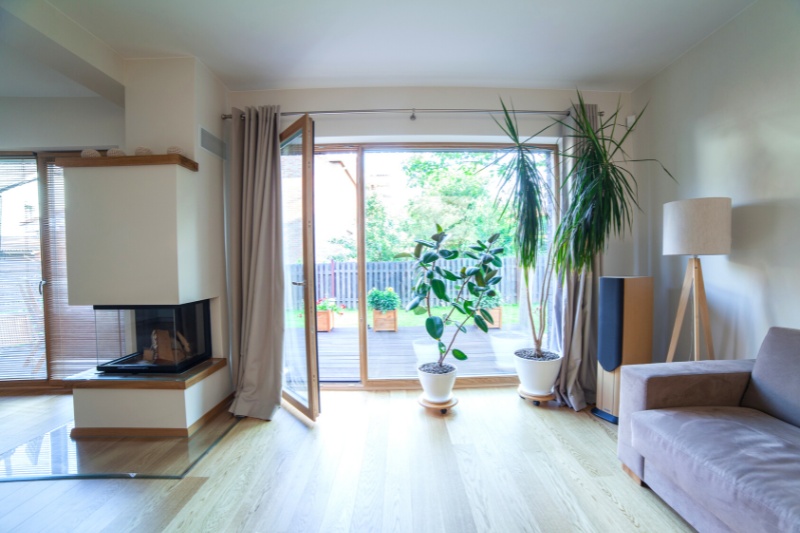
It’s imperative that your home is well-ventilated when you use a heated airer. To improve ventilation, you could use an extractor fan, a dehumidifier, or open a window.
If you can manage your ventilation systems effectively and can thereby prevent too much moisture from staying in the air, a heated airer won’t cause you much trouble.
2. Address any existing damp problems
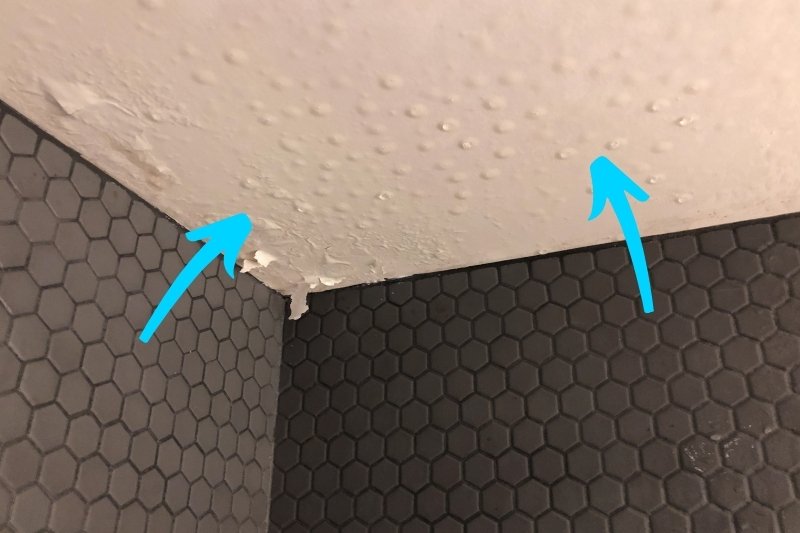
If you know you have a damp-related problem in your home, you should try and get it fixed as soon as possible, because drying wet laundry indoors is certainly going to make the issue worse.
Failing to address damp-related troubles can lead to health issues and structural damage to a property. So, get any leaks fixed and mend broken windows or pipes, for example.
3. Avoid drying thick/bulky laundry on your airer
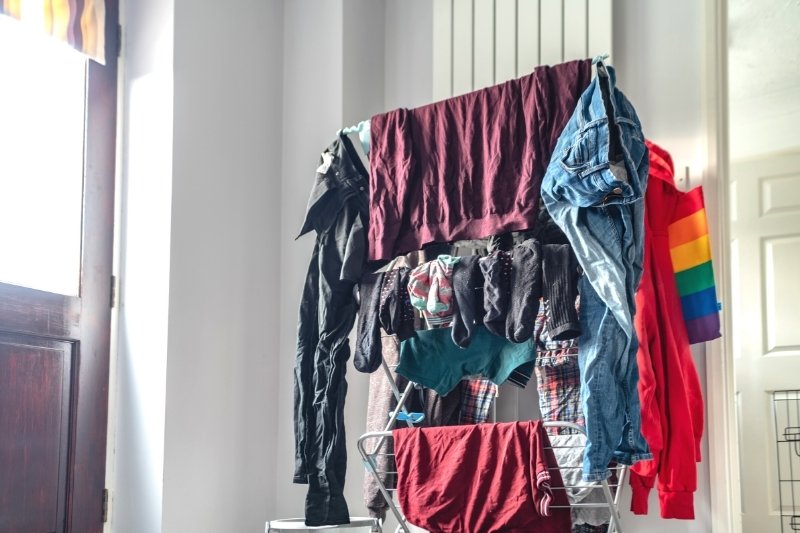
You should also be mindful about what you actually dry on your heated airer. Thick, bulky, and heavy laundry often gets clogged with water and takes an age to dry.
If you’re drying thick, heavy clothes, more moisture could be released into the air for a longer period of time when the washing is on the airer.
If you don’t have sufficient ventilation in this kind of situation, you might find that the humidity levels in the room start to climb.
You may see more condensation, and in the end, you could be faced with a major damp-related problem.
You can, of course, pop your laundry through an extra spin cycle to remove excess moisture from it. This would help to decrease how much moisture could get into the air.
Do You Need a Dehumidifier with a Heated Airer?
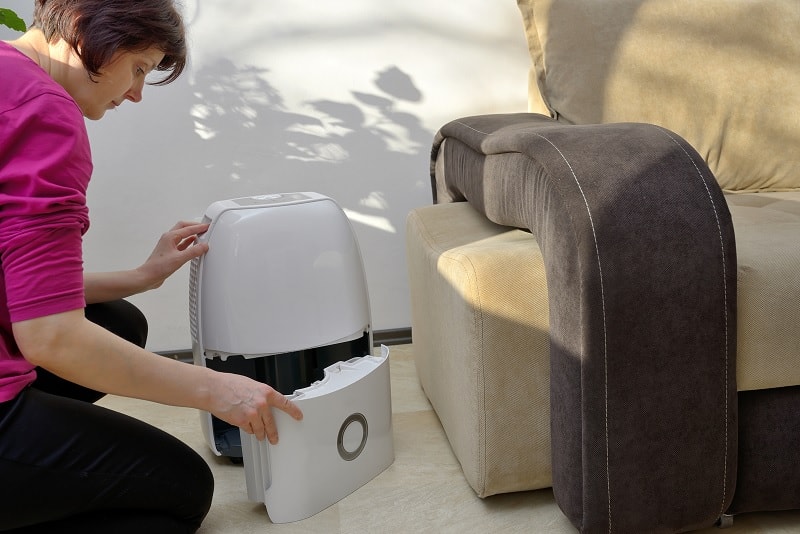
It would be worth purchasing a dehumidifier to work alongside your heated airer, so that it can collect unwanted moisture from the air. However, it’s not an absolutely essential item to buy.
You can, of course, monitor the moisture and humidity levels in other ways. For example, you can open windows, pop an extractor fan on, and place a cover over your airer.
Do You Need a Window Open When Using a Heated Airer?
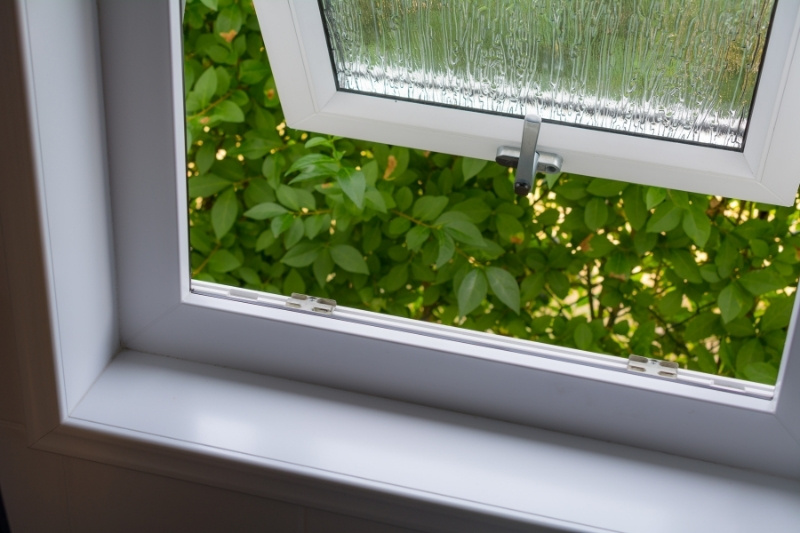
If it’s warm enough, you should open a window when using a heated airer, so you have sufficient air-flow and good ventilation in the drying area.
An open window will allow moisture to escape outside, which is an added bonus and can help reduce the chances of you getting a damp-related problem.
Recap of the Main Points:
- The heated airer itself doesn’t give rise to damp problems, it’s the moisture that comes off the wet laundry that causes problems.
- The moisture that comes off the laundry that’s on the heated airer can aggravate pre-existing damp problems.
- You must make sure that you house your heated airer in a suitable space and where there is sufficient ventilation.
- Pop your laundry through an extra spin, so it’s less moisture-filled when it goes on the airer.
- If you use a heated airer correctly, and you make sure there’s good ventilation in your home and around the airer, there shouldn’t be a problem.
- It’s worth keeping an eye on the humidity levels in your home.

Bethan has a passion for exploring, reading, cooking and gardening! When she’s not creating culinary delights for her family, she’s concocting potions to keep her house clean!
